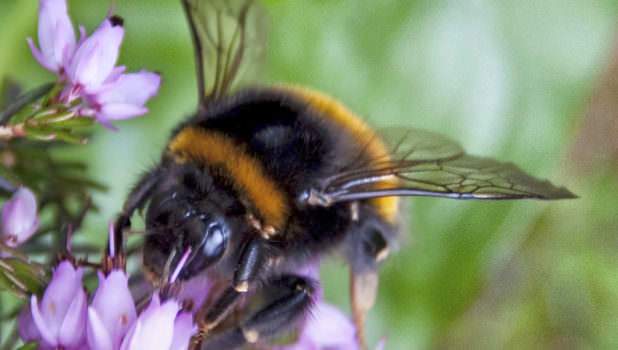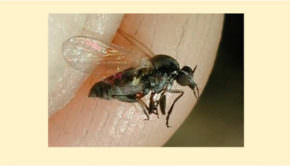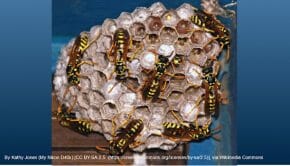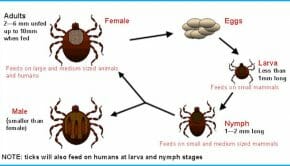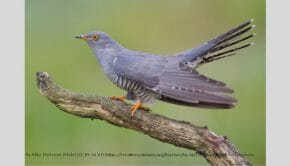Summer. It’s all about bees!
What a summer we are experiencing – lots of rain and lots of sunshine. This has resulted in a bumper growing season, which is surely welcomed by one and all. The Biodiversity Group’s plans to develop a nature trail around the Sports Field are continuing to develop, together with plans to plant a small community orchard and a community compost unit. If you would like to be involved in any of these projects, phone 01869 810209 for more details. Check out the bird feeders on the field (by the gate and behind the pavilion) and you may be lucky enough to see great spotted woodpeckers, blue tits and great tits feeding.
Bumblebees
There are distinct differences between bumblebees, honeybees and solitary bees. Bumblebees are larger and hairier which makes them perfectly suited for colder climates. Their extra insulation allows them to venture out on cold days when honeybees stay tucked up inside. They are social insects which form colonies with a single queen. These colonies usually consist of less than 50 individuals (400 at the most), not the 80,000 in a honey bee nest. The UK has 24 species of bumblebee but only 6 are a common sight in our gardens; the buff-tailed, white tailed, red tailed, garden, early and common carder bee. In early spring the queen emerges from hiberna-tion. It is now she needs plenty of pollen and nectar to build up her energy reserves so that she can begin the construction of a small nest in cavities in hedgerows, under rocks, or in disused mouse or bird’s nests. She then lays the first batch of eggs which hatch into the female workers who feed and nurture the colony. They do not store large quantities of honey, so are more sensitive to the availability of pollen and nectar-rich flowers travelling up to 2km to find them. Towards the end of the summer the queen produces male offspring as well as new queens. These leave the nest and mate after which the males die. The old queens also die leaving the new ones to hibernate. Bumblebees rarely nest in the same place 2 years running. They do not swarm and are not aggressive but if they feel very threatened the queen and workers can sting and more than once as they do not have barbs on their stingers. Bumblebees are declining dramatically largely due to the changing landscape with fewer nesting opportunities and a lack of pollen and nectar rich wild flowers to feed from. In fact 2 species have become extinct since 1940. To encourage bumblebees into your garden grow old-fashioned cottage garden per-ennials such as lavender, lupins, Aquilegia and sage, together with foxgloves, native bluebells and other wild flowers like comfrey, sainfoin, tufted vetch, bird’s foot trefoil, teasel and knapweed.
Did You Know?
- Bumblebees have smelly feet. This is very useful to other bumblebees. After feeding they leave a scent on the flower which helps other bumblebees to avoid wasting energy landing as the flower will contain very little nectar or pollen.
- Only bumblebees are capable of buzz pollination. This occurs when the bee grabs the flower and produces a high-pitched buzz. This releases pollen that would otherwise stay trapped inside. Tomatoes are pollinated in this way.
- Bumblebees do not have ears; however, they can feel the vibrations of sounds through nearby materials.
- A bumblebee’s buzz is produced by vibrating muscles and not the beating of its wings. • The worker can carry a lump of pollen weighing half as much as herself – pollen is rich in protein essential for the larvae’s development.
- When it is hot bees hover at the top of the nest vibrating their wings which circulates the air and keeps the nest cool.
All these bumblebees have been seen on the playing field.
| |
|
|
|
||
| Hairy footed flower bee | Buff tailed bumblebee | Garden bumblebee | Red tailed bumblebee | Early bumblebee | Tree bumblebee |

